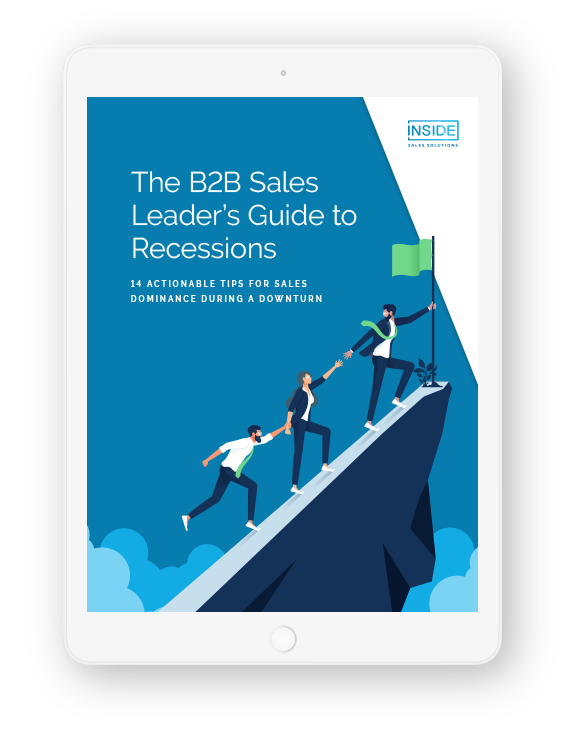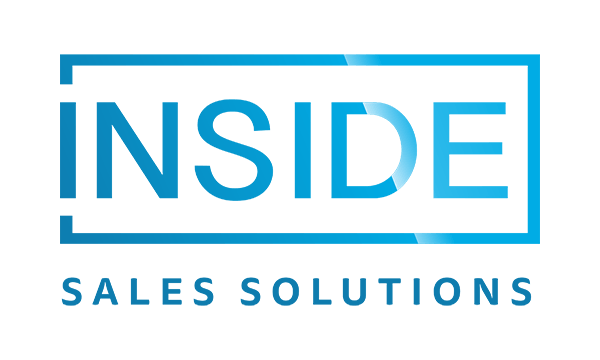This article was originally written in September 2022 and has since been updated with new discoveries and research in 2025.
Setting appointments is like the engine of your top-of-funnel sales activities. When you have a calendar filled with qualified appointments, your salespeople will be set up to successfully (and consistently) close deals and bring in revenue. But for this to be the case, you have to get a few things right.
At Inside Sales Solutions, our sales development representatives (SDRs) set appointments all day. Generating over 10,000 appointments per year for our clients has taught us a thing or two about getting the job done.
Now, we’re sharing our ultimate list of B2B appointment setting tips.
If you want to set and keep a higher number of better-quality appointments, check out these 8 tips from our experts.
Get the Ultimate Guide to Maximizing Channel Sales
1. Your List Is Either Fuel or Friction—Choose Wisely
First things first, it all starts with the quality of your list of leads. Before picking up the phone to dial or heading to your computer to craft an email, be sure you’re working with a list of high-quality, high-intent leads.
For example, prioritize accurate, human-verified contact data—especially mobile numbers. This can vastly reduce the time wasted in your multi-channel outreach strategy from contacting defunct numbers and emails.
Beyond contact information accuracy, lead quality matters just as much. Use firmographics and intent signals to target the right people—or those who actually want to hear from you and can benefit from your solution.
A generic list forces your team to work harder and waste more time. But your touchpoints become more strategic and impactful when you zero in on prospects based on data like company size, industry, job role, and real buying intent.
2. Ditch the Permission Pitch—Get to the Point
One of the most important cold calling techniques for sales is to get right to the point. How you open your calls makes all of the difference in your outcomes.
Studies show that using sales call opening lines like “Did I catch you at a bad time?” drops success rates for meetings booked by 40%.
Skip the polite-buy-awkward introductions (these prospects know why you’re calling) and jump right into the details that matter. When you lead with relevance and confidence, it earns the respect and attention of your prospects.
3. Cold Calling Isn’t Dead—It’s the Backbone
Let’s settle this once and for all: Cold calling isn’t dead—it’s just evolved. A real human voice still cuts through in a world drowning in digital noise.
Sure, email and social touches have their place (and we love a well-timed LinkedIn DM), but live conversations remain the fastest path to connection and qualification.
The truth? Cold calling is where discovery actually happens.
It’s where objections surface, needs get uncovered, and urgency can be created in real-time. It’s also where tone, timing, and intuition—things no email can capture—can make or break an opportunity.
At Inside Sales Solutions, cold calling is our craft. We’ve honed it over thousands of conversations, using insights from every dial to inform a smarter, multi-channel approach. When used right, it’s not just a tactic—it’s your competitive edge.
4. Personalization That Scales (Yes, It’s Possible)
If there’s one thing that deeply matters to prospects and customers today, it’s personalization. Studies show that companies that excel at personalization generate faster rates of revenue growth than their competitors.
So, how can top-of-funnel reps deliver personalization at scale?
The key is personalizing by segment, not snowflake, using role-specific pain points. Instead of crafting unique messages for each individual, focus on segmenting prospects based on shared characteristics such as industry, company size, or job role.
Save deep customization for high-value accounts (your calendar will thank you). While broad segmentation works well for most prospects, particularly exciting accounts might call for specific, intensive personalization. In these cases, the potential return justifies the additional time investment.
5. Objections Aren’t Roadblocks—They’re Buying Signals
Objections happen all the time—they aren’t dead ends; they mean a prospect is engaged. Viewing objections as buying signals allows you to address concerns and drive the conversion toward a positive outcome.
To navigate objections effectively, top-performing reps engage in regular training sessions (often weekly), using real calls to sharpen their skills. You can refine objection-handling techniques and build confidence by analyzing real call scenarios.
6. Stop Over-Qualifying Yourself Out of Meetings
Lead qualification is tricky to balance: You need to accurately assess lead quality, but if you gatekeep too hard, you can miss real sales opportunities.
Think of it like this: Overemphasizing strict criteria might exclude prospects who don’t tick every box but could still become valuable clients.
To prevent over-qualification, top-of-funnel reps need to align with their sales team on what makes a lead worth their time. When the criteria are clear, all teams can ensure efforts are directed towards leads that are truly worth pursuing.
7. What Worked Last Month Might Flop This Month
The sales landscape today is incredibly fast-moving. Strategies that were effective just a few short weeks ago may or may not yield the same results today.
Because of this, it’s essential to constantly review and refresh messaging, cadences, and subject lines to ensure they remain relevant and engaging.
Additionally, use your data to your advantage. Tap into insights from your sales tools and team feedback to identify trends and areas for improvement. This data lets you iterate quickly and effectively, adapting your strategies to meet evolving market demand.
8. Know When It’s Time to Tag in the Pros
If your team’s running at full tilt and your leads start collecting dust, that’s your cue. Even the best internal teams hit a wall—bandwidth, burnout, or simply needing more scale than they can spin up overnight.
Outsourcing your sales development function doesn’t mean giving up control; it means getting strategic. The right partner plugs into your sales motion precisely, offering flexible engagement models that meet you where you are—whether you’re a scrappy startup chasing product-market fit or an enterprise team needing to expand without the growing pains.
This isn’t about throwing bodies at the problem. It’s about adding firepower with a partner who brings proven processes, real-time agility, and a deep understanding of what works across industries. You don’t just get more calls made—you get more of the right conversations happening.
Let’s Turn Tips Into Booked Meetings
If you or your team struggles to convert prospects into booked meetings, these tips can help. But if you really want to master your top-of-funnel sales activities once and for all, consider outsourcing your sales development.
Here at Inside Sales Solutions, we don’t just hand out tips—we execute them daily, setting thousands of meetings across SaaS, IT, and cybersecurity. If you’re ready to solve your pipeline problems, we’re ready to help.
Let’s talk strategy, bandwidth, and how to make cold calling work for your team—without burning them out.
Considering Outsourced Sales Development?
Take a peak at how B2B sales teams can overcome economic uncertainty.


